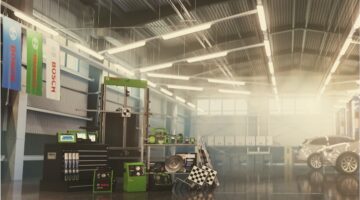Chances are that anyone has a basic idea of the stakes that you take every time you get behind the wheel. According to Richard D. Schuler, a Florida drunk driving injury lawyer, “Being in a car accident can lead to many short and long-term consequences for victims and their families. Some common injuries victims of car accidents can face include broken bones, severe bruising, fractures, and head, neck, and spine trauma, among others. Dealing with the aftermath of a car accident can mean ongoing trips to doctors and specialists, missed time at work, and lost time with friends and family.”
With this said, there are many moments on the road where people can get involved in an accident through little fault of their own, or a simple lapse of judgment rather than truly reckless judgment. As a result, carmakers are hard at work not only to avoid these issues, but also mitigate the damage from accidents when they do happen. Here are some common examples to look out for.
Phone lock-down tech: This is an interesting option because, in a way, we already have something that handles this issue. The rise of integrated technology like Apple Car Play and Android auto means that people can use the full power of their smartphones without needing to use their hands. And yet, accidents still happen. One piece of technology that’s trying to limit this issue is a concept car that has a slot for your smartphone. Putting it here means you still get the same connectivity options, but the phone is physically held in place to stop the temptation of picking it up while driving. In time, perhaps this will pick up steam with other carmakers.
Adaptive headlights: In their own way, headlights are already a major safety feature for cars, providing visibility in settings where driving might otherwise be dangerous. However, the one-size-fits-all approach for lighting isn’t necessarily the best way to use this. Several carmakers are making additions and addendums to make their headlights adaptive to different environments. Some of these include high beams that are designed to turn on and off to avoid blinding incoming traffic, as well as other headlights that adapt based on speed. These speed-based headlights will widen at lower speeds and narrow at higher speeds.
Collision warnings: There are a variety of situations that can lead to a collision, from unseen traffic to another driver’s error. This is why carmakers are trying to get ahead of the situation by using warning technology. For example, proximity systems can detect when a car is unsafely close and either activate an alarm system or automatically brake.
Self-driving cars: Technically, these aren’t on the road yet, but in theory, this could be the car safety innovation to end all innovations, if you think about it. For example, the vast majority of car accidents on the road are not caused by mechanical failures of environmental issues, but human error. Self-driving cars would, in theory, get rid of this potential problem entirely. For now, adaptive cruise control is the closest thing that you will be able to find to that. This expands on traditional cruise control by using radar to make sure that your car keeps at a certain distance from other vehicles. The car will take steps like slowing down and tightening the seatbelt when this distance is breached.
With all this said, though, there are always going to be different situations where you need something more than car safety innovations to keep you safe. Part of this is also taking care of your vehicle and yourself on and off the road in order to avoid chances of a potential accident. For example, make sure that you get regular maintenance on your car. This extra step will minimize the chance of a mechanical failure from your car while you are driving. While these are rare, if a system fails, there may be literally nothing you can do to avoid an accident on a busy street.
Until we get to the age where self-driving-cars will do the legwork for you, it’s also important to make sure that you spend the time and energy to drive as safely as possible as well. One thing that may be worth it is taking a defensive driving course. These don’t cost a lot, and can help you brush up on some basic good driving tips to keep you safe. As an added bonus, some insurance companies will give you a little money off of your bill for taking the course. Finally, you want to make sure that you avoid driving your car when you are overly fatigued. Even if you mean well, your reaction time to sudden situations may be compromised.









